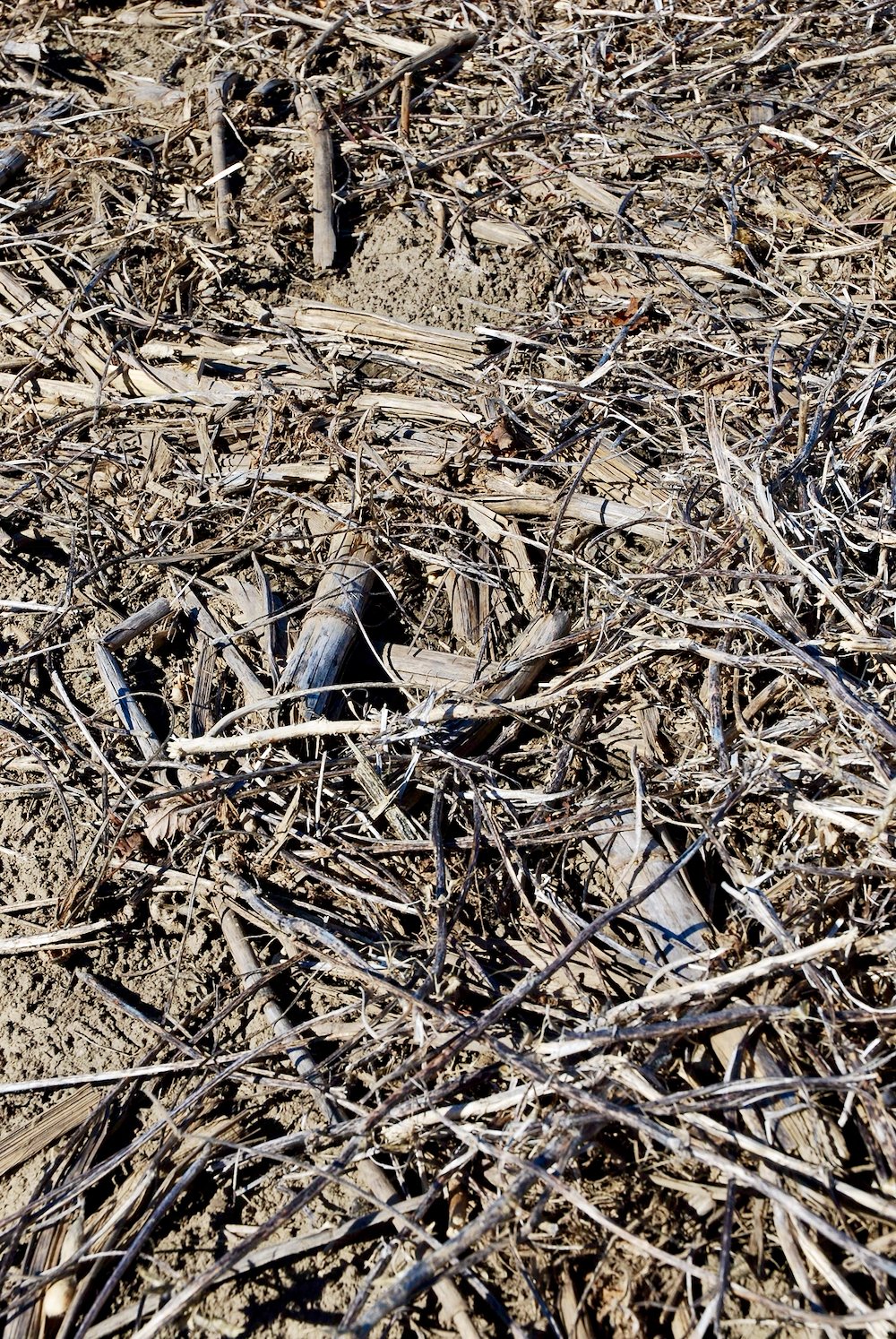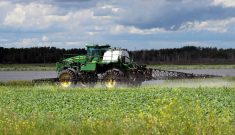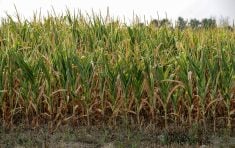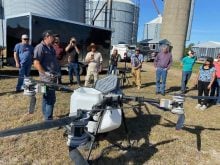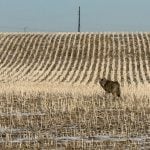When it comes to nitrogen use in corn, it’s always been a question of how much to apply.
University of Illinois research on the source of N – how much a corn plant gets from fertilizer and how much from soil –has initiated a considerable amount of debate since the results were released last May.
Kelsey Griesheim, now an assistant professor at North Dakota State University, completed her graduate studies at Illinois and determined that about 67 per cent of N taken up by corn plants is from naturally occurring sources in the soil, not from fertilizer.
Read Also

Defence investments could benefit agriculture
A bump in Canada’s NATO spending commitments could lead to infrastructure investments that would benefit rural areas
Why it matters: A better understanding of how corn crops use nitrogen will help growers meet sustainability goals and could increase profitability.
Five months later, Emerson Nafziger, professor emeritus at the University of Illinois, wrote a follow-up piece acknowledging Griesheim’s work and the controversy her findings sparked.
The primary research was conducted in 2017 and 2018 at three sites in east-central Illinois. Ammonia was enhanced with a natural heavy isotope known as 15N, making it traceable in the plant and applied at different rates, forms, placements and timings.
Use of the isotope made it easier to measure the amount of N from applied ammonia found in corn plants at maturity.
As Nafziger pointed out in his October response, the actual amount of N utilized by the crop to maximize yield cannot be determined from the use of a single rate of N fertilizer. He also noted that Griesheim’s research relied on fall-applied ammonia, without any spring-applied amounts for comparison.
Other factors to be considered are the location and conditions in Illinois. Soil types, soil depth, length of planting season and climate – even topography – can be significantly different compared to parts of Ontario.
That doesn’t mean the research results from Griesheim’s work are meaningless. There’s always the opportunity to learn and plenty of room for improvement with N rates and N-use efficiency.

Heading east
Paul Sullivan, a certified crop advisor is the senior agronomist and owner of P.T. Sullivan Agro, based near Kinburn in the Ottawa Valley. He believes more growers are attempting to fine-tune their N applications in corn. Such adjustments aren’t always comfortable, given its importance in corn production.
His experience in working with clients, viewing on-farm yield maps and conducting plots, has shown the right source, rate, time and placement all come into play but rate makes the most difference.
“N rate is key but can be elusive and human nature leans to ‘more is better’ just to make sure,” says Sullivan. “If N is applied by a systems approach using corn hybrid characteristics, landscape position and soil texture, then an optimum input is very profitable.
“By delaying applying a portion of your N until at least 30 days after planting, it provides in-season opportunity to assess the seasonal ‘soil cooking potential’, and apply to spatial differences in supply/demand across the field.”
From an N-uptake perspective, Sullivan notes corn takes up 1.5 to 1.6 pounds of N per bushel produced through mass flow with water. That’s the total uptake over the growing season and about half of that is removed in the grain.
The corn plant will take up 10 per cent of its N supply from 0 to 50 days, 50 per cent from 50 to 75 days and 40 per cent during the final 60 days in a 150-day growing season.
“Some growers may interpret ‘efficiency’ as spreading all of their N in one pass, usually pre-plant,” says Sullivan. “The reality of this application is it’s up to 50 days prior to the time when rapid N uptake starts in the corn plant.”
The 2023 Ontario Corn Committee hybrid performance site at Panmure Farms near Kinburn had high yields with what many would consider conservative N applied. The test location included 68 hybrids from 2450 to 2900 crop heat units. The trial averaged 30 bu./ac.
Field history included a diverse rotation with winter wheat in 2022, ideal seedbed conditions and precise planting completed by the Winchester Station research team. The silt-loam soil was quite high in soil phosphorus and potassium levels with a pH of 6.3 and soil organic matter levels of 3.7 per cent. The fertilizer broadcast pre-plant was 158 N – 46 P2O5 and 15 K2O -32S -1.1Zn -1.5 Mg.
“Diversity is the ticket, but not too much or too little for inputs, recognizing available water supply,” adds Sullivan. “Crop rotation brings many differences to the soil in root exudates, physical attributes and duration of ground cover. Diversify it as much as possible then keep it there with selective tillage and input management.”

Counterpoint
The debate over how N is measured in uptake is intriguing and Greg Stewart, a disciple of N-use efficiency and N rates in corn, is thankful for the Griesheim-Nafziger exchange and ensuing discussions. If nothing else, it has agronomists, researchers and growers talking more about how and why they’re applying nitrogen.
Stewart believes there’s a simpler, more effective method of measuring nitrogen use efficiency and deriving greater value leading to higher yields. That’s the simple use of a zero-N check strip, a practice he and others have advocated for years.
“The example I put up is if a grower applies 150 lb. of N per acre and produces 200 bushels of corn yield, the one way of expressing nitrogen use efficiency would be 0.75 pounds of N per bushel,” says Stewart, biological field specialist with Syngenta Canada.
“But how much of it came from the soil? I think that’s a pretty reasonable question.”
Again, Stewart welcomes the debate but challenge lies in convincing growers to try the zero-N check strip, because most growers want to avoid losing yield for any reason.
“Yet it’s the only real way to answer the question of how much of the N in your corn is coming from the soil, independent of the N fertilizer,” says Stewart.
“Let’s say it’s the same field that we grew 200 bushels of corn with 150 lb. of applied. What happens if the grower applies no nitrogen, and gets 100 bushels of corn? Now you realize that fully half of the nitrogen that came into the corn crop looks like it could have been supplied by the soil.”
The two knowns – 150 lb. of N leading to 200 bushels, and zero N yielding 100 bushels – provide what Stewart calls a “fairly eloquent response.” And Nafziger makes much the same inference from all the N-rate trials.
“That’s the key piece of information that you have say, ‘at zero N, we can reasonably estimate or infer how much of the N came from the soil,” notes Stewart. “It’s a little additional fuel to the fire that if growers would like to get a handle on how to manage nitrogen, multi-rate trials are great, but they’re also a lot of work. But if a farmer runs a zero N strip, it gives them an estimate of what the soil N supply is.”
Stewart concedes that running a zero strip the full length of a field makes most growers shudder, yet it provides an indication of the N-supplying capacity of that field. And it would cover the knolls or the depressions and across slopes, which is not necessarily provided by a 10- to 30-metre strip.
N-supply capacity
The next-stage benefit, from Stewart’s perspective, is in finding that zero N-rate yield. It creates a different mind-set that no longer assesses nitrogen applications solely on the prospect of what it takes to generate 250 bushels of corn.
Instead, knowing that at zero N applied, the field is still capable of growing 150 bushels, gives a grower pause to ask what the combination of modern genetics and the soil generates at base level before any N is applied.
That is the N-supply capacity, and although it may not be a hard-target calculation, it’s still a reminder that there is a significant contribution of N in the soil, regardless of location.
Finding the N-use efficiency through a zero-N strip provides more than that baseline N “divining rod.” It begins to change the thought process on a more accurate optimum N-rate for fertilizer applications aimed at maximizing yield.
“This past year, growers have grown 275-bushel corn on the same amount of nitrogen that they’ve grown 200-bushel corn, and that’s because the vast majority of the N for that crop is not coming from fertilizer,” says Stewart.
“If you have, let’s say 60 per cent of your N from the soil reserve, and you get a good year in terms of temperature, rainfall, mineralization and availability of nitrogen, you shouldn’t be surprised that you go to 275 instead of 200 with no more N fertilizer applied.
“That also fits into the context of where growers are sitting at today, having harvested a pretty big corn crop.”




